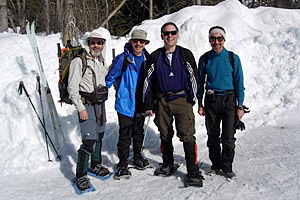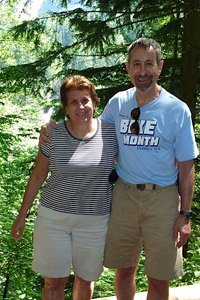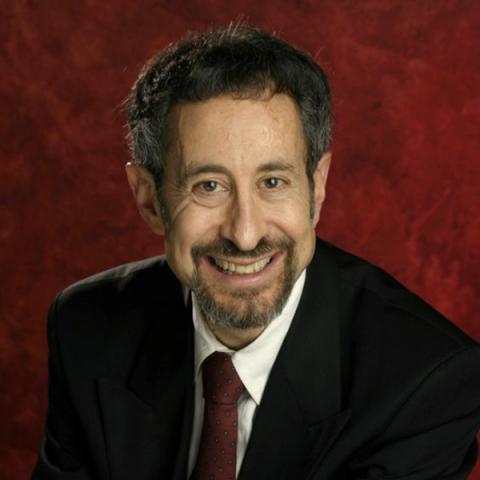
Biking to Hurricane Ridge - up 5,000 feet in over 17 miles
What brought you to the Snohomish Health District?
I really wanted to have an opportunity to put my own stamp on the practice of public health. At first, I was very optimistic and naïve. It was just before the recession. We had a lot of fantastic programming and I had hoped to expand that. I focused on the "three legs" of public health: communicable disease, environmental health and community health (especially chronic disease prevention and maternal-child health).
My perspective has evolved, largely driven by the need for better emergency preparedness and by increasing evidence showing how important early childhood development is on neurologic development and impacts it has later in life. This latter has increased my focus on interventions targeting youth. The other critical factor influencing my job today has been finances.
HIGHLIGHTS
- MPH, University of Washington, 1989
- MD, University of Colorado, 1978
- Adjunct Associate Professor, Health Services
- 18 years at Public Health – Seattle and King County
- Medical epidemiologist, CDC, 1984-86
Were you hit hard by the recession?
We've had to make deep cuts. In 2008, this agency had the equivalent of 228 full-time people. Today we have less than 140. That has really forced us to step back and figure out what public health can and should do. I've been an active player in the debate over the foundational services of public health.
This started 20 years ago. Local health jurisdictions and the state came together to set standards for public health. More recently, we've acknowledged that we can't do everything given shrinking resources. Now we ask, "What is it we must absolutely do? What can be expected from governmental public health no matter where you live?"
An example of what falls into the foundational is classic communicable disease control. We must investigate who's been exposed to whooping cough or meningitis, then assure that those exposed get preventive therapy. Important additional services that are not foundational include giving shots. We must assure everyone in the community has access to immunizations, but public health doesn't need to provide them if the medical community can do so.
How does health care reform affect this debate?
It provides tremendous opportunity for public health and the health care delivery communities to better integrate. We've been siloed for too many years. I co-chaired the state's Public Health Partnering with the Health Care Delivery System Work Group (it's a terrible name but we couldn't come up with an acronym or anything else to call it).
That group spent a lot of time with really high-level folks, such as hospital CEOs and leaders of nursing associations, nonprofits, schools and other organizations. These leaders were willing to step back from the way things have always been done and consider new approaches.
Most of health has little to do with the health services you receive. Health has to do with what you're born with, how you behave, what the environment does to you. In Snohomish County, we have some really good leaders who see the value of this connection between public health and the medical community. We have our eyes on projects that can improve everyone's health.

Snowshoeing with friends at Scottish Lakes
What are some of the projects?
One has to do with palliative care. It's to make sure everybody has had a discussion with their health care provider about end of life. Do you have all your papers put together so that everyone knows how to take care of you? That will improve quality of life at the end of life and reduce costs.
The other one is the "Gear Up and Go" program, where last year over 7,000 fifth-graders in the county received an accelerometer (like a Fitbit), worn around the wrist. It uploads data to a system that allows students to see their own physical activity data, for teachers to see how their class is doing, and for schools to see how their school is doing.
Why fifth graders?
Up until fifth grade, kids get enough physical activity, then it starts to decline. By junior high, they're a lot more independent and pushing out against the kind of things mom and dad want them to do. Physical play isn't as attractive. They want to do online games or sit in front of the TV.
Are there any results?
Not yet. The Northwest Center for Public Health Practice is evaluating the outcomes from actual use of the devices.

Hiking with best friend and wife, Judy Unger, at Twin Falls near Issaquah
What are your future plans?
Before I retire, I'm hoping to finish this work, to see that my agency is transformed, that the public health system across the state is transformed. When I retire, it will be only from running an agency. I fully expect to remain engaged and look forward to a future where I can share with others (especially students) what I've learned over 30-plus years in public health.
I work regularly with the COPHP (Community-Oriented Public Health Practice) folks, and currently have an undergraduate working with me on smoking in public places. Undergraduates still haven't made up their minds about their future. I would love to influence that -- not because I expect everyone to go into public health, but because I'd love everyone to appreciate it.
What are you hobbies and other activities?
Biking's been a big part of my life, and I like long-distance rides. I run some (and have run the New York and Seattle marathons). I love to ski, hike, backpack, snowshoe, and I love going to the theater with my wife.
(By Jeff Hodson)
Originally Published: January 2015
